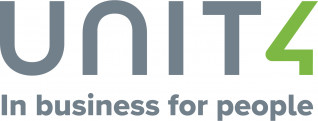
When it comes to adopting new software, local governments have historically been somewhat cautious. And you can understand why. Government authorities face a number of unique challenges and must operate under certain constraints that do not always apply to others.
For instance, local government systems that are public-facing must be highly reliable because they have to be online 24/7/365. They must also be private and secure, particularly where personally identifiable information for residents comes into play.
Furthermore, they must have the ability to serve a large number of users. Unlike commercial businesses, a local authority’s target audience is the entire population of a region. Meaning systems have to be capable of supporting multiple languages and accessibility needs and be able to withstand unexpected surges in demand.
Civic Pulse recently conducted a survey asking local officials what they look for in government software. In order of importance, their top criteria included affordability, low “total cost of ownership”, and local government fit. Ease of use was important too, as were strong service and support.
The results indicate a clear pattern. Local governments are not averse and, in fact, are looking to implement better software. But successful solutions must easily adapt to existing processes, constraints, and practices. Otherwise, most local officials will be reticent to implement them.
Local Government Fit
Local governments want software that provides them with extra “capabilities” but that doesn’t necessitate massive changes to existing processes. However, unless they are built from the ground up with municipalities in mind, off-the-shelf solutions rarely mesh well with existing municipal operations and often fail during implementation. And even if they can be customized to do what is necessary, the amount of work, risk and cost usually increases to the point of being untenable – particularly for smaller municipalities.
The problem is this: local governments can’t make do with one-size-fits-all software anymore. As the Civic Pulse research shows, local authorities differ from each other significantly across multiple dimensions.
Total Cost of Ownership (TCO)
More than ever, municipalities are dealing with severe budget constraints. COVID-19 continues to affect our communities in terms of public-health, socially and economically, and local governments are bearing the brunt of this. Reduced revenues coupled with the need to maintain existing services and direct more money to public health have come at a significant cost.
Not surprisingly municipalities are looking for ways to control their expenses, including how they are choosing to implement new software solutions.
What is TCO?
Simple: it’s the sum of all direct and indirect costs associated with buying, implementing and managing the software over its duration of use.
There is a wide range of factors that impact TCO. For instance, easy-to-use software lowers TCO because staff time to learn and use the software is reduced. Software with exceptional vendor service and support also has a lower TCO because resolution of software issues or response to user queries happens quickly.
Software vendors that will appeal to local government brands feature comprehensive knowledge bases for self-help, online training, and dedicated remote support capabilities. Increasingly, vendors are moving to show government departments their return on software investments in real-time. Measuring the TCO against labour-saved by the solution gives local governments the data they need to justify continued spending.
Affordability
Affordability is perhaps the biggest constraint for government departments looking to purchase software. Local governments need to keep their infrastructure costs low to continue providing high-quality, front-line services to the public.
Consistent with what is happening in the private sector, local governments are embracing cloud-based solutions that minimize large capital purchases and the need for additional in-house IT resources. This has the added benefit of allowing the infrastructure to scale with demand, ensuring that any unnecessary spend on infrastructure is avoided. Flexible pricing models that allow local governments to choose the capabilities they need a la carte are also attractive.
AccessE11 – Built for Local Government
A large number of local governments have selected AccessE11’s citizen request software precisely for the reasons described above. With AccessE11, local governments get a solution that is:
• Created with municipal operations in mind
• Extremely simple to adopt and use
• Adaptable to each municipality’s unique needs without costly software development
• Cloud-based and accessible from anywhere on any device
• Affordable for municipalities of any size



.png)
.png)



